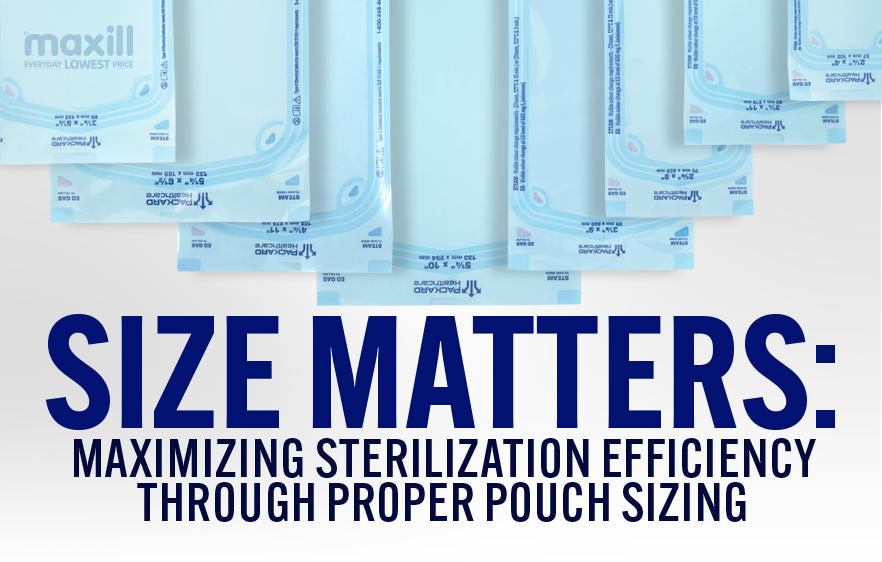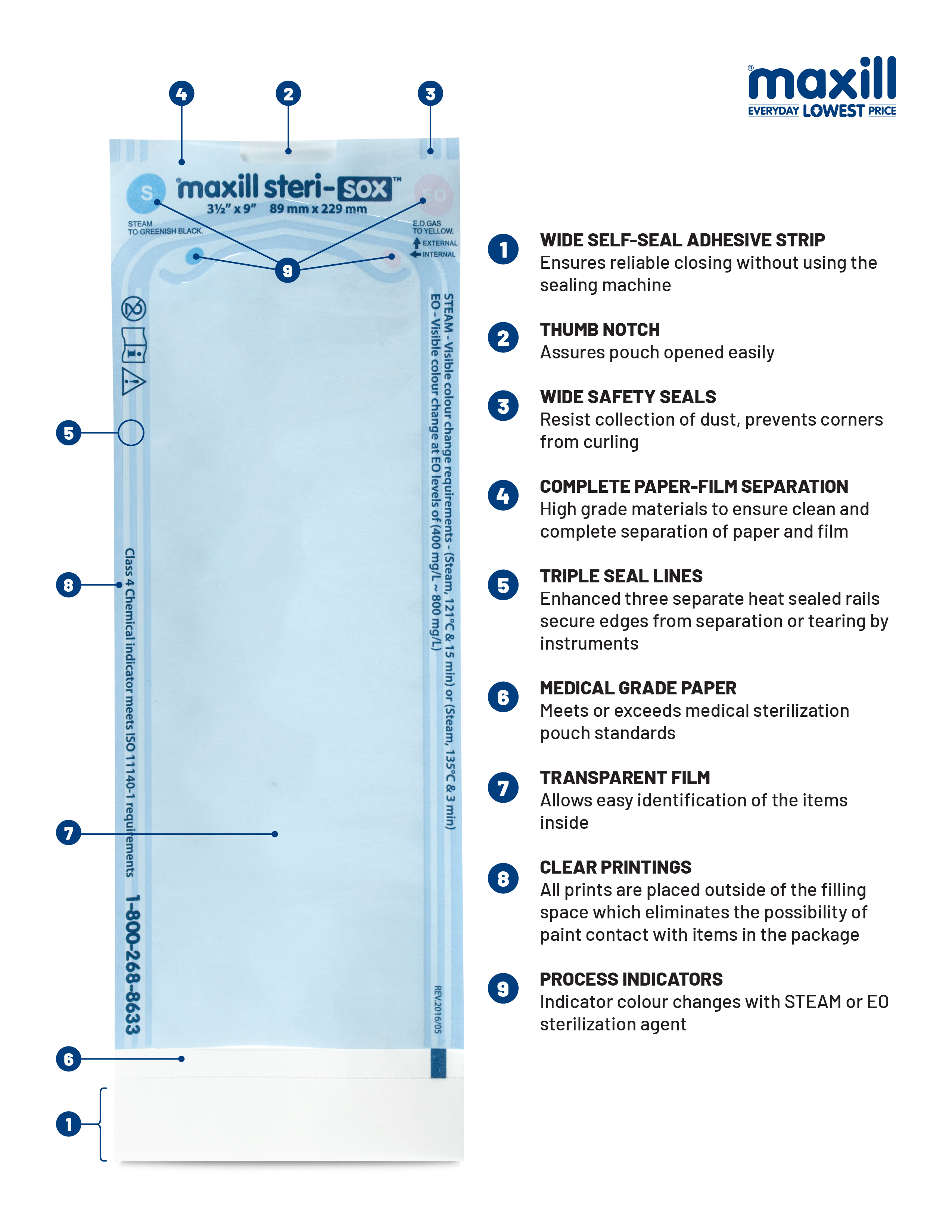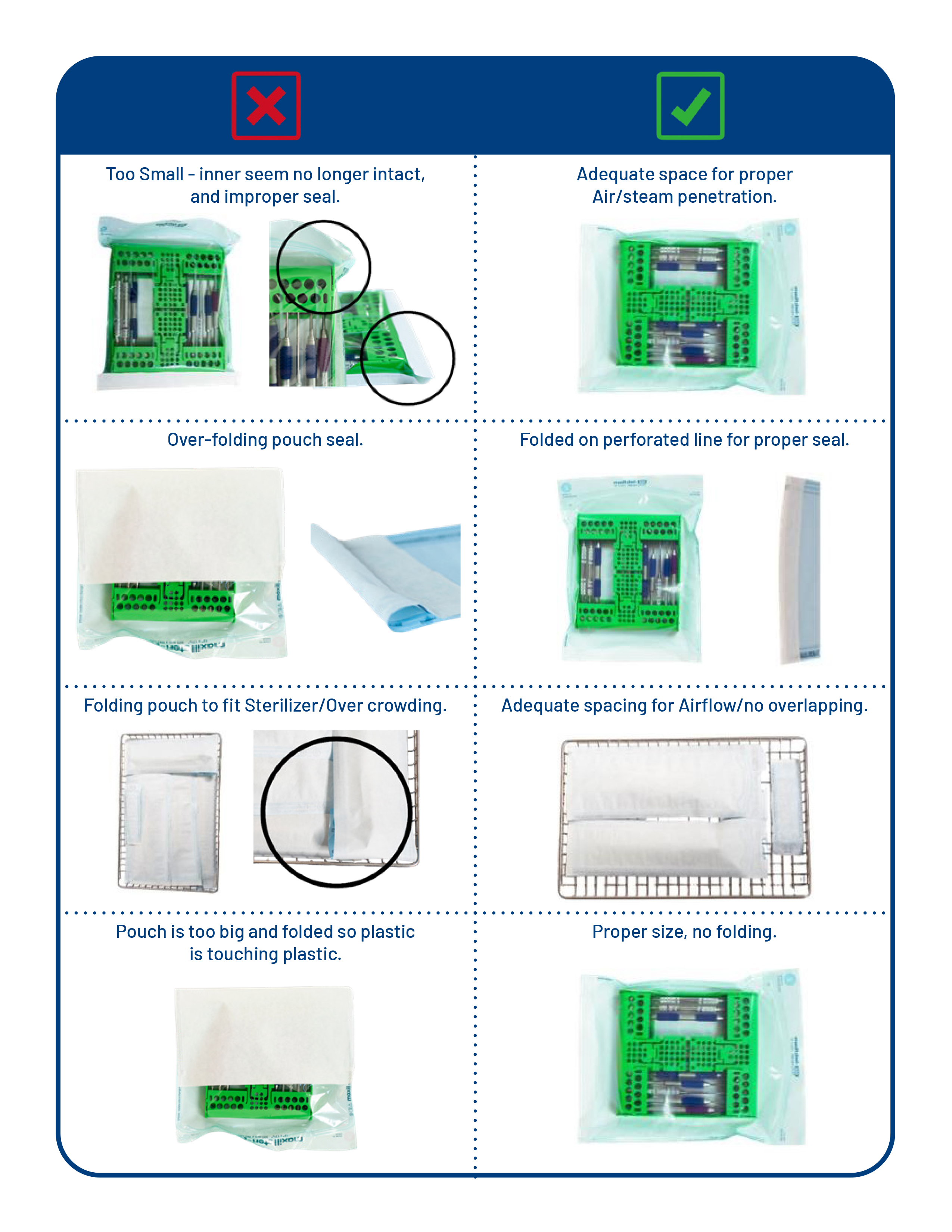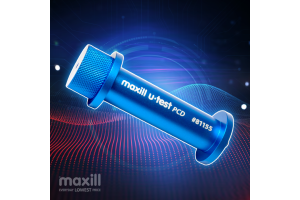SIZE MATTERS: Maximizing Sterilization Efficiency Through Proper Pouch Sizing

In healthcare facilities, meticulous attention to detail is paramount to ensure patient safety and uphold infection prevention and control (IPAC) standards. Among the myriad of considerations, selecting the appropriate size sterilization pouches might seem like a minor aspect, yet its significance cannot be overstated. Proper sizing not only ensures the effectiveness of sterilization processes but also plays a pivotal role in IPAC compliance and operations optimization within healthcare facilities. Let's explore key factors to look for in a sterilization pouch, review the importance of choosing the proper sizes, and why it is crucial for maintaining stringent IPAC protocols.
Understanding Sterilization Pouches
Sterilization pouches serve as a crucial barrier system designed to maintain the sterility of medical or dental instruments and equipment until they are ready to use. These pouches are typically constructed from materials like medical-grade paper and plastic, featuring heat-sealed edges to prevent contamination from reaching the sterilized contents. The primary objective of sterilization pouches is to safeguard against microbial ingress during storage and transportation, thereby preserving the integrity of sterilized items.
What to Look For
When selecting sterilization pouches, several factors must be considered to ensure proper sizing and functionality:
Compatibility
Ensure that the pouch size aligns with the dimensions of the instruments or equipment being sterilized. Most manufacturers provide a range of pouch sizes to accommodate various items, ranging from small instruments like rotary burs, rubber dam clamps, or dental mouth props to larger items such as instrument cassettes or surgical kits. A pouch should be large enough (Approximately ¼ - ½ inch circumferential space) to allow the contents to move slightly from side to side without compromising the integrity of the pouch, stressing the internal seams, or risking punctures, and still be able to close the pouch properly using the perforated, self-adhesive seal.
Indicator Requirements
Most sterilization pouches now come equipped with external (Type 1) and internal (Type 4) chemical indicators. In steam sterilization, at minimum a type 4 (multi-variable) chemical indicator is used to monitor key parameters like pressure, temperature, and time.
Sterilization pouches do not come equipped with class 5 chemical indicators. In certain provinces or regions, it is required to have a Class 5 chemical indicator in every sterilization pouch. According to the 2023 Canadian Standards Association (CAN/CSA Z314-23) a Class 5 must be placed in every package. However, it’s encouraged that you refer to your specific IPAC guidelines and standards followed to ensure compliance with chemical indicator protocols.
Material Quality
Being mindful and opting for pouches constructed from high-quality, medical-grade materials that offer superior barrier properties and resistance to punctures and tears. The pouch material should be durable enough to withstand the sterilization process without compromising integrity. The use of inappropriate packaging can lead to instrument contamination and compromise the effectiveness of sterilization by inhibiting proper heat and steam penetration.
Seal Integrity
Inspect the heat-sealed edges of the pouch for uniformity and integrity. A secure seal is essential to prevent microbial admission and maintain sterility throughout the storage and transportation process. Importantly, the size of the pouch should be selected so that the contents do not stress the seal. If an item is too tight or exerts pressure on the seal from the inside, it indicates that the pouch is too small for that item. This overstressing of the seal prevents proper airflow and penetration of steam or gas for proper sterilization, leading to potential breaches of contamination, or pouches sticking to items after being reprocessed. It’s essential to leave enough space within the pouch to not only accommodate the item but also maintain the integrity of the sterilization pouch and the safety of its contents.
Packaging Configuration
An essential factor to consider when selecting sterilization pouches is optimizing space when loading the sterilizer. Package configuration must align with the specific requirements of the sterilizer being used. Staff are advised to consult the manufacturer’s instructions for use (MIFU) of their sterilizers to determine the correct pouch orientation for their specific units. It’s crucial to make sure that pouches are not overlapping or crowded within the sterilizer to allow for optimal steam or gas penetration. Adhering to the specific loading requirements outlined in the MIFU is imperative for compliance and to ensure that the contents of each package are properly reprocessed. This attention to proper packaging configuration ensures that the sterilization process is effective, maintaining the sterility of instruments and equipment according to the highest standards of infection prevention and control.

Importance of Proper Size Selection
The importance of selecting the right size sterilization pouch cannot be overlooked. Inadequate sizing can lead to several adverse consequences, including compromised sterility, increased risk of contamination, and operational inefficiencies. Here’s why proper sizing is paramount:
Optimal Sterility
Choosing a pouch that accommodates the size of the instrument or item being sterilized ensures adequate spacing and airflow within the pouch. This facilitates optimal penetration of sterilizing agents, such as steam or ethylene oxide, throughout the contents, thereby enhancing the effectiveness of the sterilization process.
Prevention of Overcrowding
Overstuffing a sterilization pouch increases the risk of inadequate sterilization due to restricted airflow and improper heat distribution. It can also lead to mechanical damage to delicate instruments or puncture of the pouch, compromising sterility and necessitating re-sterilization, which incurs additional time and costs.
Enhanced Workflow Efficiency
Properly sized sterilization pouches contribute to streamlined workflow processes within healthcare facilities. By eliminating the need to repackage and reprocess items multiple times due to improper pouch sizing, staff create efficiency in the sterilization process, optimize resources, and minimize turnaround times for instrument availability, thereby improving overall operational proficiency.
Compliance with IPAC Standards
Compliance with stringent IPAC guidelines is non-negotiable in healthcare settings. Choosing the right size sterilization pouches is a fundamental aspect of IPAC compliance, ensuring that sterilized items remain protected until their intended use, thereby mitigating the risk of healthcare-associated infections (HAIs) and upholding patient safety standards.
Common Mistakes vs. Proper Techniques

Key Sterilization Protocol Reminders
-
-
-
- All instruments or kits must be cleaned (ultrasonic or Washer-disinfector), dried, and inspected for any debris.
- Hinged instruments should be on open position.
- Items with removable parts are to be disassembled unless otherwise specified by Manufacturers Instructions for Use (MIFU)
- Devices or items with concave surfaces are to be positioned in a way that facilitates drainage to avoid water pooling.
- Upon cycle completion, ALL packs and pouches should be completely dry before removing from sterilizer.
- No overlapping
- No folding pouches
- Seal pouches by folding along perforation
- Verify Pouch orientation according to sterilizer MIFU.
-
-
Wrapping Up
Thorough attention to detail in healthcare facilities is crucial for maintaining patient safety and upholding infection prevention and control standards. When it comes to sterilization pouches, selecting the appropriate size is a seemingly minor yet essential aspect that cannot be overstated. Proper sizing plays a pivotal role in ensuring the effectiveness of sterilization processes, compliance with IPAC protocols, and operational optimization within the healthcare setting. By considering factors such as compatibility, indicator requirements, material quality, seal integrity, and packaging configuration, healthcare professionals can ensure they are doing everything they can to properly sterilize medical and dental instruments and equipment, prevent contamination, and improve workflow efficiency. Adhering to proper procedures and avoiding common mistakes in sterilization protocols further reinforces the importance of selecting the correct size pouch to maintain the highest standards of infection prevention and control standards.










